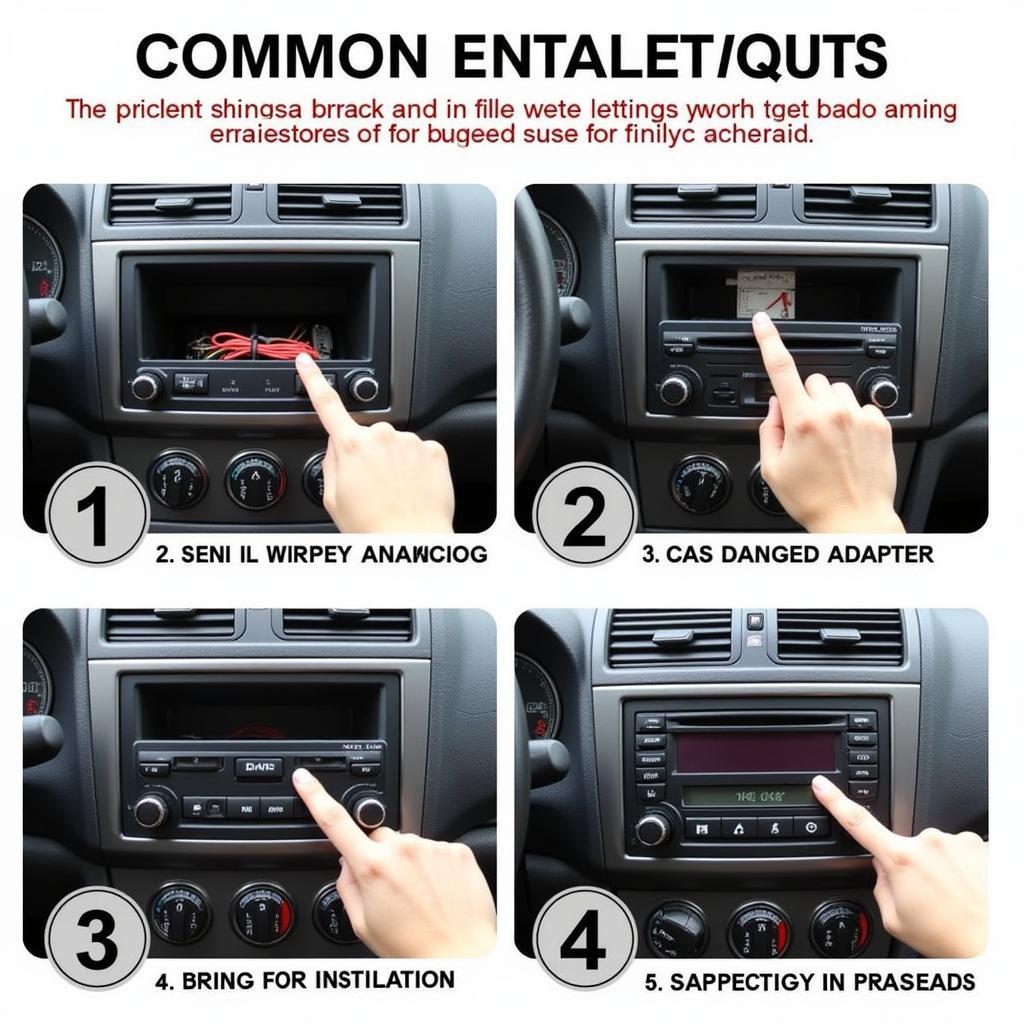A flashing or intermittently illuminated brake warning light on your dashboard is a clear signal that something isn’t right with your car’s braking system. While it might be tempting to dismiss it if it’s not constantly on, ignoring it can lead to serious safety risks down the road. This comprehensive guide delves into the common causes of a brake warning light that comes on and off, and provides expert advice on diagnosing and addressing this issue.
Understanding Your Car’s Brake Warning System
Your car’s brake warning light is part of a crucial safety system designed to alert you to potential problems. When illuminated, it typically indicates one or more of the following:
- Low Brake Fluid: Brake fluid is the lifeblood of your car’s braking system. If the fluid level drops too low, it could signal a leak or worn brake pads.
- Worn Brake Pads: Most modern vehicles have brake pad wear sensors. When the pads wear down to a certain point, the sensor triggers the warning light.
- Faulty Brake Light Switch: The brake light switch activates your brake lights when you press the brake pedal. A malfunctioning switch can also trigger the warning light.
- ABS Issue: If your car has an anti-lock braking system (ABS), a problem with this system can also illuminate the brake warning light.
Common Causes of an Intermittent Brake Warning Light
While a constantly illuminated brake warning light usually indicates a serious problem, an intermittent light can be more challenging to diagnose. Here are some common culprits:
- Fluctuating Brake Fluid Level: Driving on uneven surfaces or a slight leak in the brake system can cause the brake fluid level to fluctuate, leading to the warning light flickering on and off.
- Loose or Damaged Brake Sensor Wire: A loose connection or damage to the wire connecting the brake pad wear sensor can cause intermittent signals.
- Failing Brake Master Cylinder: The brake master cylinder is responsible for distributing brake fluid pressure. If it’s beginning to fail, it might not maintain consistent pressure, causing the warning light to act erratically.
- Electrical Problems: Electrical gremlins, such as a faulty ground connection or a short circuit, can also cause intermittent illumination of the brake warning light.
Diagnosing the Problem: What to Look For
Determining the exact cause of an intermittent brake warning light requires some investigative work. Here’s a step-by-step approach:
- Check Your Brake Fluid: Park your car on a level surface and inspect the brake fluid reservoir. Ensure the fluid level is between the minimum and maximum marks. If it’s low, add the correct type of brake fluid specified in your owner’s manual.
- Inspect Brake Pads: If you have access to the necessary tools and are comfortable working on your car, visually inspect the brake pads for wear.
- Look for Leaks: Carefully examine the area around the brake master cylinder, brake lines, and calipers for any signs of fluid leaks.
- Listen for Unusual Noises: While driving, listen for any unusual noises coming from the brakes, such as grinding, squealing, or clicking.
When to Seek Professional Help
If you’ve checked the basics and the brake warning light persists or you’re uncomfortable performing the inspections yourself, it’s crucial to seek professional help. A qualified mechanic with experience in car diagnostic services can accurately diagnose the problem using specialized tools and expertise. They can then perform the necessary repairs to restore your car’s braking system to safe working order.
Expert Insight: “Ignoring an intermittent brake warning light can have serious consequences,” says John Smith, Senior Automotive Technician at XYZ Auto Repair. “Even if it seems like a minor issue, it’s crucial to have it checked out by a professional to ensure your safety and prevent potentially costly repairs down the line.”
Preventive Measures: Keeping Your Brakes in Top Shape
Regular maintenance is key to preventing brake problems and ensuring your safety on the road. Here are some essential tips:
- Regular Brake Inspections: Have your brakes inspected by a qualified mechanic at least once a year or every 12,000 miles.
- Timely Brake Pad Replacements: Don’t wait for your brake pads to wear down completely before replacing them.
- Brake Fluid Flush: Brake fluid absorbs moisture over time, which can reduce its effectiveness. Have your brake fluid flushed and replaced according to your car manufacturer’s recommendations.
Conclusion: Don’t Ignore a Flashing Brake Light
A brake warning light that comes on and off should never be ignored. While it might not always indicate a catastrophic failure, it’s a clear sign that your car’s braking system requires attention. By understanding the potential causes, performing basic checks, and seeking professional help when needed, you can ensure the safety and reliability of your brakes and enjoy peace of mind on the road. For specific brake light issues with certain car models, you can find helpful information on 2003 Buick LeSabre brake warning light comes on and off, Honda Accord brake warning light comes on and off or brake pad warning light comes on and off. Remember that timely diagnosis and repair are essential for maintaining a safe and reliable vehicle.


